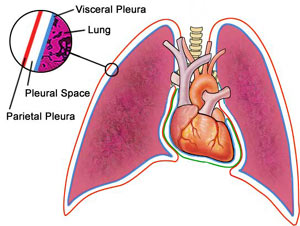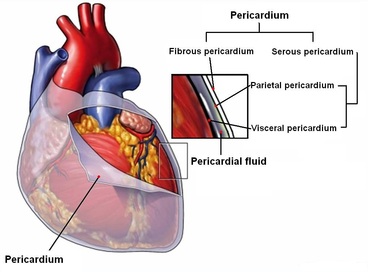What is the structure, function, and location of the pleura, pericardium, and peritoneum?
1 Answer
The pleura, pericardium and peritoneum are membranes that encapsulate major organs of the body. The pleura, the lungs, the pericardium the heart and the peritoneum the digestive organs.
Explanation:
The pleura, pericardium and peritoneum are membranes that encapsulate major organs of the body.
The Pleura are membranes of the thoracic cavity. There are two pleura, the parietal and the visceral. The parietal pleura lines the inner surface of the thoracic cavity and ribcage. The visceral pleura line the lungs. The pleura secrete a fluid that fills the pleural space between the lungs and ribcage to reduce the friction created by the movement of the lungs during inhalation and exhalation.


The pericardium is a dense tissue sac that surrounds the heart. This membrane secretes fluid into the pericardial space between the heart and the pericardium. This fluid reduces the friction created by the movement of the heart during pumping the blood.


The peritoneum also consists of two types. The parietal peritoneum which lines the inner walls of the abdominal and pelvic cavities, while the visceral peritoneum lines the digestive organs. The peritoneal fluid helps lubricate the inner organs of the cavities, while the visceral peritoneum helps to support the organs.

s3.amazonaws.com/classconnection/357/flashcards/1252357/png/structure-of-the-peritoneum-and-peritoneal-cavity-14D07FA8A6568509E59png

